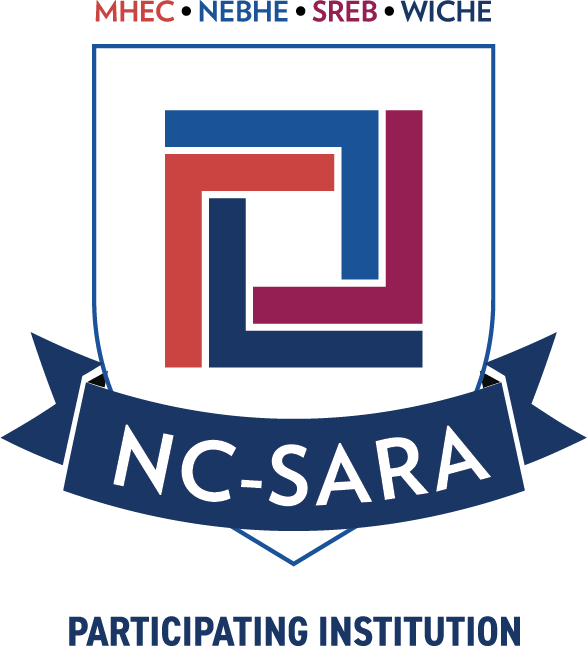Student Right to Know

The Student Right-To-Know Act
The Student Right-To-Know Act requires higher education institutions participating in federally funded financial aid programs to publicly disclose certain information.
You'll find this information in the topic areas below or in the Student Handbook. You may request a printed handbook at Student Services on any M State campus between 8 a.m. and 4:30 p.m. Monday-Friday.
2025 Annual Security and Fire Safety Report
Updated annually by Oct. 1.
M State is required under the Clery Act to disclose policy statements and crime statistics for incidents which occur on four defined areas: on campus, in on-campus housing, on unobstructed public areas immediately adjacent to the campus and on non-campus properties owned and/or controlled by the institution. This information is published in the Annual Security and Fire Safety Report by Oct. 1 annually and includes the three most recent years of data.
Pursuant to Section 485(f) of the Higher Education Act of 1965 (20 U.S.C. 1092(f)), M State provides a report of past hazing misconduct involving student organizations. The information below includes the name of the student organization, a general description of the violation(s), whether hazing involved the abuse or illegal use of alcohol or drugs, key dates (when hazing took place [if known], start/end of investigation, when student organization was notified of outcome), the findings for the determination of responsibility, and the sanctions imposed. Reports of hazing that did not result in a finding of responsibility are not included. Information provided in the report will not include personally identifiable information about specific individuals. Any student organizations under active investigation will not appear on the Campus Hazing Transparency Report until conclusion of the investigation (and findings of responsibility). M State updates this report twice a year and will maintain entries concerning findings of misconduct in this report for five years.
For more information related to M State's hazing policy, hazing prevention education/programming, how to report hazing behavior, go to M State's Student Code of Conduct Policy.
To report incidents of hazing, click this link: Reporting Hazing at M State.
Annual statistics on hazing are available in M State's Annual Security and Fire Safety Report included in the Student Right to Know listings beginning with the 2026 report (issued on or before Oct. 1, 2026). Hazing statistics include incident reports that meet the federal definition of hazing in Section 485(f)(6)(A) of the Higher Education Act of 1965 (20 U.S.C. 1092(f)(6)(A)). These statistics do not reflect actual findings of hazing behavior, which are included in the Campus Hazing Transparency Report.
Read the updated Campus Hazing Transparency Report
2025 M State Equity in Athletics Data
Updated annually each October.
Institutions must make available to prospective students the college's commitment to providing equitable athletic opportunities for its men and women students. Any co-educational institution of higher education that participates in a federal student aid program must complete an Equity in Athletics Disclosure Act Report and enter the data via an online mandatory survey to the U.S. Department of Education. Data collected in the survey is published by the Office of Postsecondary Education on the Equity in Athletics Data Analysis Cutting Tool. Information is gathered by the Office of Institutional Research and the Business Office and is disclosed through appropriate publications, mailings or electronic media.
Students have the right to file a grievance in writing if they have allegations of improper, unfair, arbitrary or discriminatory action by an employee involving the application of a specific provision of a college rule or regulation. Students are encouraged to seek resolution to any concerns by discussing them informally with a staff member at the college. If a resolution cannot be reached using informal intervention, students can complete the Student Complaint, Grievance or Informal Concerns Form at Forms.
The Student Complaints, Grievances and Informal Concern Policy and Procedure are available for reference and guidance with this process. Information can also be found in the Student Handbook.
Other Resources
Pursuant to the U.S. Department of Education's Program Integrity Rule, institutions providing online education are required to provide all prospective and current students with contact information for the state agency or agencies that handle complaints against postsecondary education institutions offering distance learning within that state.
If a complaint cannot be resolved at the college level, you may contact the Minnesota Office of Higher Education, the Higher Learning Commission or the National Council for State Authorization Reciprocity Agreement (NC-SARA).

Drug-Free Schools and Communities Act Biennial Review
2024 Drug-Free Schools and Communities Act Biennial Review
The college provides this report in accordance with the Drug-Free Schools and Communities Act Amendments of 1989 (Public Law 101-226) and Minnesota Statutes 152. Drugs; Controlled Substances, 340A. Liquor, and 624.701 Alcohol in Certain Buildings or Grounds.
M State is committed to providing an environment free of alcohol and illegal drugs for its students, employees and visitors. Please reference the Alcohol and Drug Free Environment Policy for more information.
Sexual Assault Data Report
Office of Higher Education - Minnesota Sexual Assault Data Report
Minnesota State Statute 135A.15, Subd. 6 requires postsecondary institutions to report sexual assault statistics annually to the Office of Higher Education (OHE). Additional information and resources for M State students can be found at Sexual Misconduct Resources.
Graduation and Transfer-Out Rates
Student Right-to-Know M State Graduation and Transfer-Out Rates
Each institution must annually make available to prospective and enrolled students the completion or graduation rate of certificate- or degree-seeking, first-time, full-time undergraduate students. The completion and graduation rate must be disaggregated by gender, major racial/ethnic subgroups, recipients of Federal Pell Grants and subsidized Direct Stafford Loans, and recipients of neither Federal Pell Grants nor subsidized Direct Stafford Loans. M State's Office of Institutional Research gathers this data and discloses it through appropriate publications, mailings or electronic media.
The data are to be available by July 1 each year for the most recent cohort that has had 150 percent of normal time for completion by August 31 of the prior year. If the information is requested by a prospective student, it must be made available prior to the student's enrolling or entering into any financial obligation with the institution.
Note: Institutions may add other information to their completion/graduation rate disclosures (e.g., graduation rates for other time frames, but the HEA-required information must be identifiable and separate from any additional information).
An institution that determines its mission includes providing substantial preparation for students to enroll in another Title IV HEA-eligible institution must disclose a transfer-out rate for each cohort.
A student shall be counted as a completion or graduation if the student earns a degree or certificate or completes a transfer-preparatory program within 150 percent of normal time for the student's program.
Institutions are allowed to exclude from completion/graduation or transfer-out rate calculations those students who leave school to serve in the armed forces, in official church missions or with a federal foreign aid service; or are deceased or totally and permanently disabled.
Placement Rates
Institutions must make available to current and prospective students information regarding the placement in employment of and types of employment obtained by graduates of the institution's degree or certificate programs. (Institutions must identify the source of the placement information and any time frames and methodology associated with it.). Under this provision, institutions are not required to calculate placement rates, but an institution must disclose any placement rates it calculates for any program.
M State participates in the annual Minnesota State Graduate Placement Survey following a strict protocol prescribed by the Minnesota State system of college and universities. Graduates are surveyed one year after their graduation to determine their employment status. Responses are submitted to and processed by the system office, which produces a database and report generator that calculates the "related employment rate" for all of M State's programs and for M State as a whole. The "related employment rate" represents the total number of graduates working in a position related to their program of study as a percentage of the total number of graduates available for related work. M State makes this information available through appropriate publications, mailings or electronic media.
Other Institutional Data
Student Loan Default Rate
The U.S. Department of Education reports official cohort default rates once per year. A cohort default rate is the percentage of a school’s borrowers who enter repayment on certain Federal Family Education Loan (FFEL) Program or William D. Ford Federal Direct Loan (Direct Loan) Program loans during a particular federal fiscal year (FY), October 1st to September 30th, and default or meet other specified conditions prior to the end of the second following fiscal year.
The FY 18 national cohort default rate is 7.3 percent The FY 18 national cohort default rate for two-year schools is 11.5 percent M State’s FY 18 default rate is 9.4 percent
Visit Federal Student Aid Default Management for more information on default rates.
See M State's policies and procedures:
M State offers some programs that are designed to prepare students to apply for licensure examinations and/or certification necessary for employment in the states of Minnesota and/or North Dakota. Professional licensing standards can vary widely from state to state, so completion of these programs may not meet the licensure or certification requirements in other states. Visit Professional Licensure Disclosures to learn more.
Notification of Rights Under FERPA for Postsecondary Institutions
The Family Educational Rights and Privacy Act (FERPA) provides students certain rights with respect to their education records. To learn about these rights, visit:
